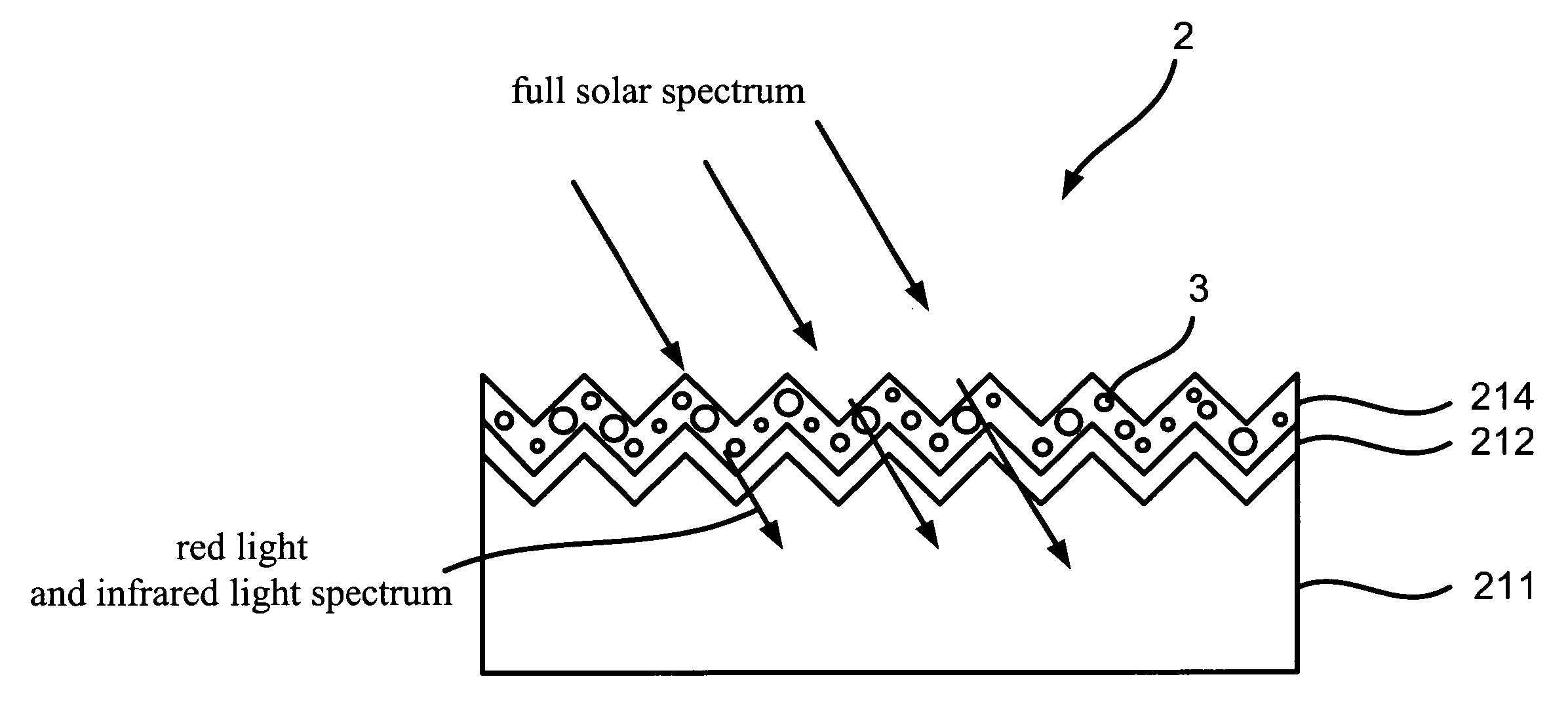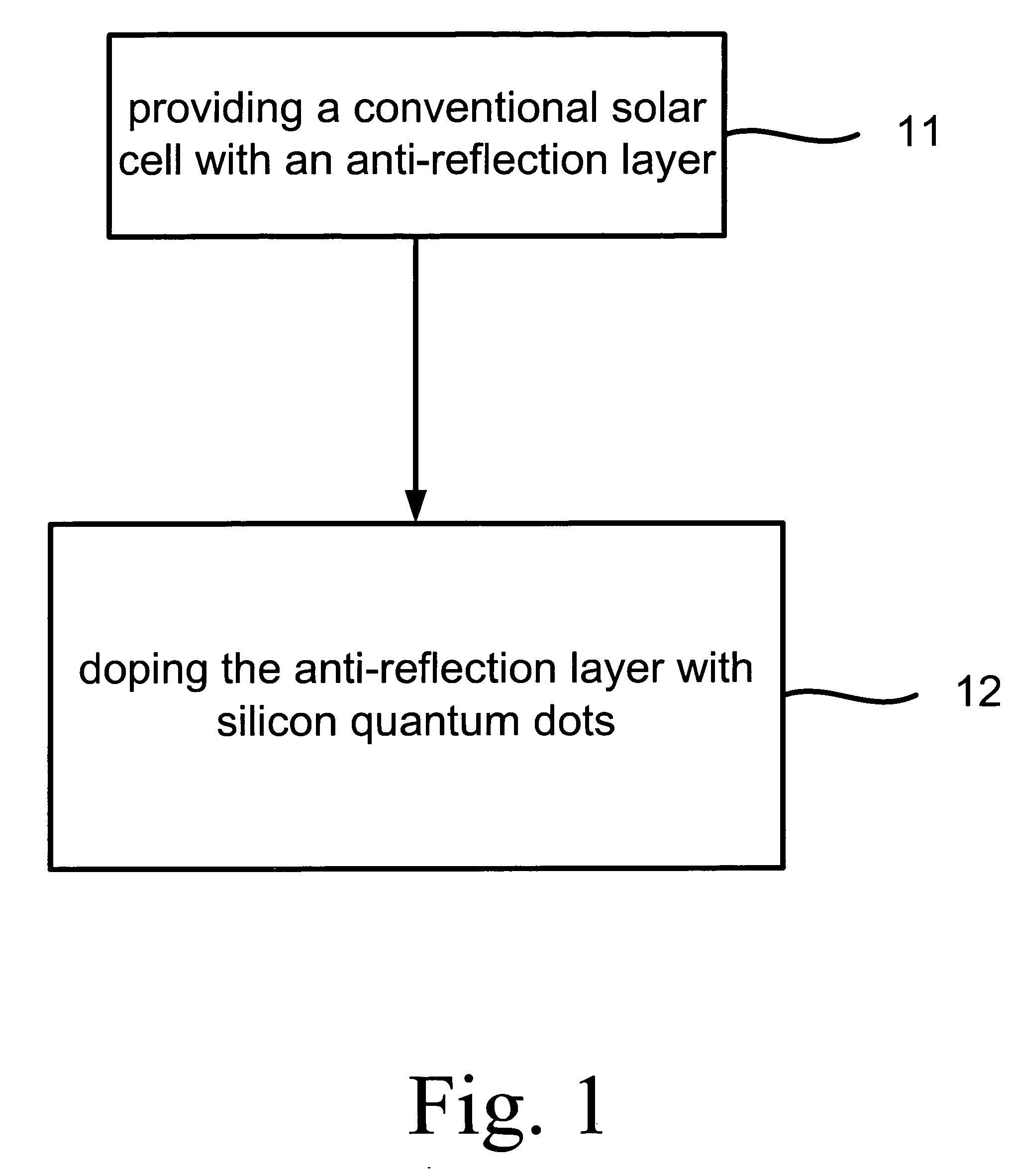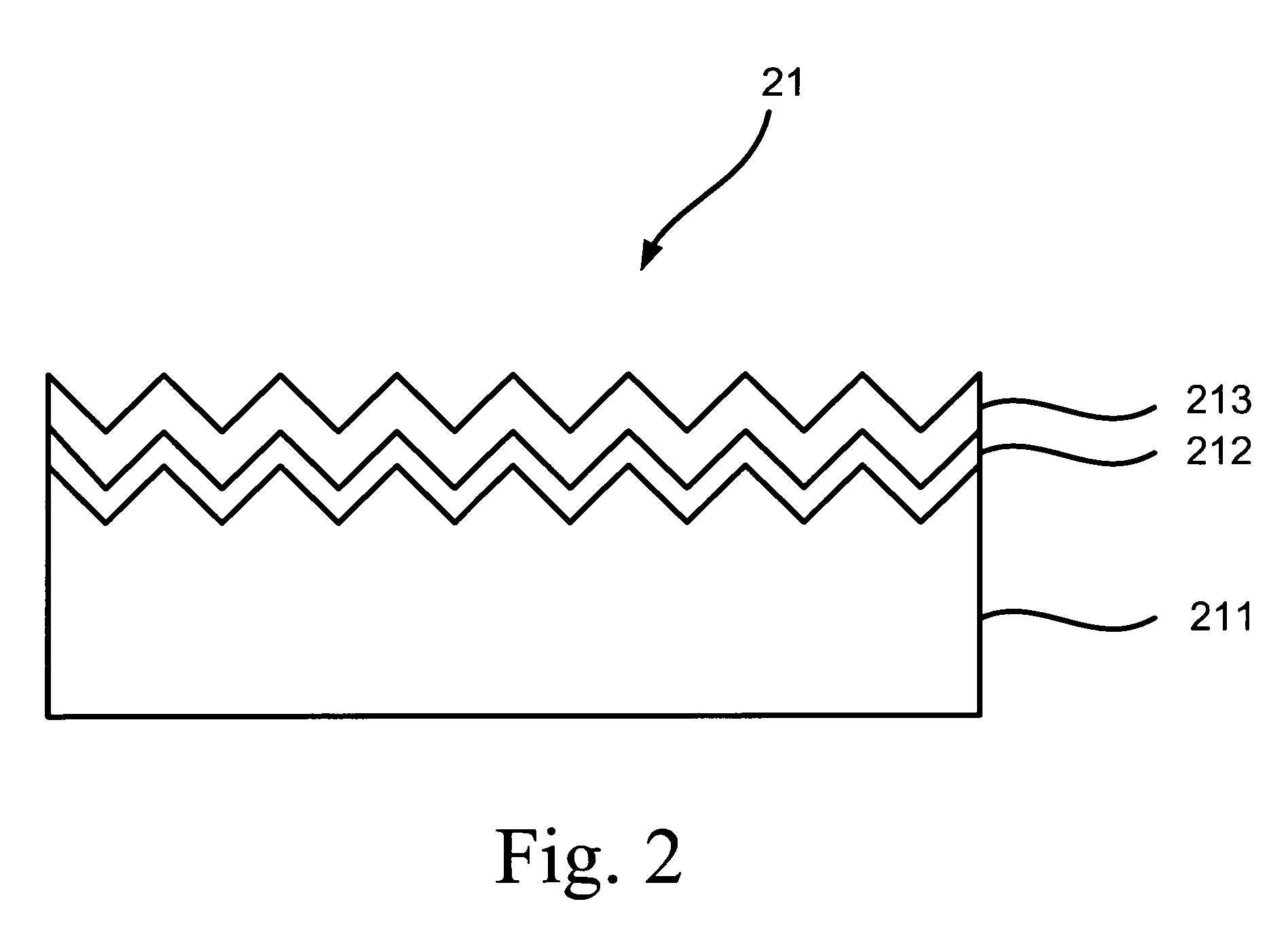Method for making a full-spectrum solar cell with an anti-reflection layer doped with silicon quantum dots
a solar cell and anti-reflection technology, applied in the field of full-spectrum solar cells, can solve the problems of small penetration depth of photons, damage to solar cells, and electron-hole pairs caused by photons that are easy to be captured superficially
- Summary
- Abstract
- Description
- Claims
- Application Information
AI Technical Summary
Benefits of technology
Problems solved by technology
Method used
Image
Examples
first embodiment
[0022]Referring to FIGS. 1 and 2, at 11, a single-crystal solar cell 21 is provided according to the present invention. The single-crystal solar cell 21 includes a p-type substrate 211, an n-type diffusion layer 212 and an anti-reflection layer 213.
[0023]Referring to FIGS. 1 and 3, at 12, the anti-reflection layer 213 is transformed into an anti-reflection layer 214 doped with silicon quantum dots 3 based on a physical or chemical method. Such a method is plasma-enhanced chemical vapor deposition, electron cyclotron resonance chemical vapor deposition, very high frequency chemical vapor deposition, hot wire chemical vapor deposition, e-gun or sputtering for example.
[0024]At first, the anti-reflection layer 213 is coated with a film of silicon nitride and / or silicon oxide. To this end, silicon hydride and dichlorosilane are used as a source of silicon, and nitrogen and ammonia are used as a source of nitrogen, and oxygen and nitrous oxide are used as a source of oxygen. The silicon / n...
second embodiment
[0028]Referring to FIG. 5, according to the present invention, there is provided a multi-crystal silicon solar cell 51 as the conventional solar cell. The multi-crystal silicon solar cell 51 includes a p-type substrate 511, an n-type diffusion layer 512 and an anti-reflection layer 513.
[0029]Referring to FIGS. 6 and 7, the anti-reflection layer 513 is transformed into an anti-reflection layer 514 doped with silicon quantum dots 6 later. For the transformation, the silicon / nitrogen ratio is higher than 3:4 while the silicon / oxygen ratio is higher than 1:2. The multi-crystal silicon solar cell 51 is transformed into a full-spectrum solar cell 5 including the anti-reflection layer 513 doped with the silicon quantum dots 6.
third embodiment
[0030]Referring to FIG. 8, according to the present invention, there is provided a thin-film silicon-based solar cell 71 as the conventional solar cell. The thin-film silicon-based solar cell 71 includes a substrate 711, a p-type layer 712, an i-type layer 713, an n-type layer 714 and an anti-reflection layer 715.
[0031]Referring to FIGS. 9 and 10, the anti-reflection layer 715 is transformed into an anti-reflection layer 716 doped with silicon quantum dots 8. For the transformation, the silicon / nitrogen ratio is higher than 3:4 while the silicon / oxygen ratio is higher than 1:2. The thin-film silicon-based solar cell 71 is transformed into a full-spectrum solar cell 7 including the anti-reflection layer 716 doped with the silicon quantum dots 8.
PUM
 Login to View More
Login to View More Abstract
Description
Claims
Application Information
 Login to View More
Login to View More - R&D
- Intellectual Property
- Life Sciences
- Materials
- Tech Scout
- Unparalleled Data Quality
- Higher Quality Content
- 60% Fewer Hallucinations
Browse by: Latest US Patents, China's latest patents, Technical Efficacy Thesaurus, Application Domain, Technology Topic, Popular Technical Reports.
© 2025 PatSnap. All rights reserved.Legal|Privacy policy|Modern Slavery Act Transparency Statement|Sitemap|About US| Contact US: help@patsnap.com



